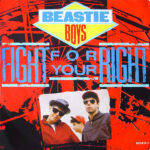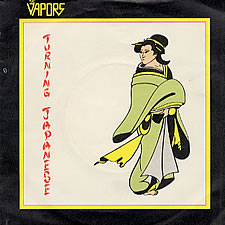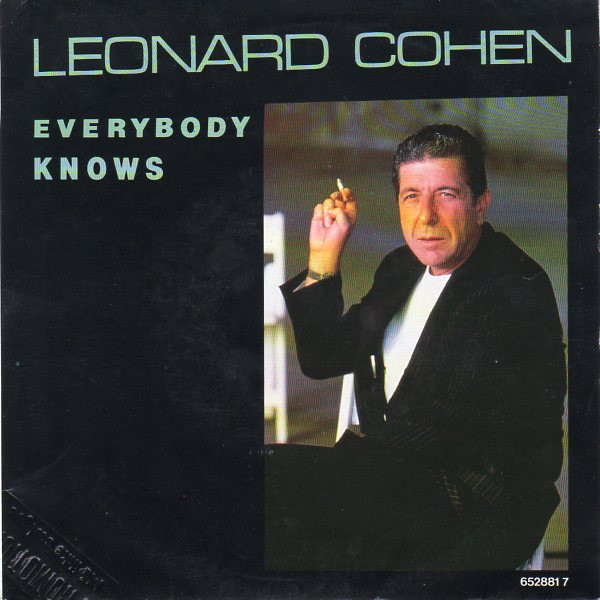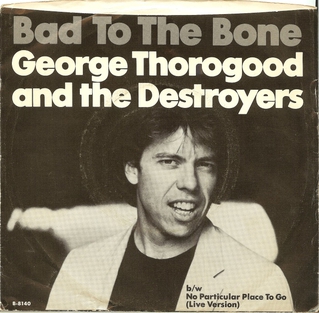 In 1986, a bold, energetic, and unapologetically chaotic anthem erupted onto the music scene: “Fight For Your Right (To Party!)” by the Beastie Boys. With its blend of punk aggression, hip-hop swagger, and humorous irreverence, the track became an instant cultural phenomenon, defining a generation’s rebellious spirit while challenging expectations of both genre and decorum. Decades later, the song remains an iconic statement in popular music—a celebration of youthful freedom, audacious humor, and the defiance of authority.
In 1986, a bold, energetic, and unapologetically chaotic anthem erupted onto the music scene: “Fight For Your Right (To Party!)” by the Beastie Boys. With its blend of punk aggression, hip-hop swagger, and humorous irreverence, the track became an instant cultural phenomenon, defining a generation’s rebellious spirit while challenging expectations of both genre and decorum. Decades later, the song remains an iconic statement in popular music—a celebration of youthful freedom, audacious humor, and the defiance of authority.
“Fight For Your Right” was never meant to be a subtle song. It’s loud, brash, and filled with deliberate exaggeration. Its very existence is a reflection of the Beastie Boys’ approach to music: irreverent, genre-bending, and socially aware even when cloaked in the guise of adolescent rebellion. While it is frequently remembered as a party anthem, the track is much more than that—it is a playful critique of societal norms, a bold expression of individuality, and an enduring testament to the power of music to provoke, entertain, and inspire.
Beastie Boys: From Hardcore Roots to Hip-Hop Pioneers
The story of “Fight For Your Right” begins with the Beastie Boys themselves—Michael “Mike D” Diamond, Adam “MCA” Yauch, and Adam “Ad-Rock” Horovitz. Formed in New York City in the early 1980s, the trio initially operated in the hardcore punk scene, performing loud, aggressive, and rebellious music. Their early work demonstrated a DIY ethos, a willingness to push boundaries, and an irreverent sense of humor that would later define their career.
As hip-hop began to rise in prominence, the Beastie Boys adapted their punk sensibilities to a new musical landscape. Their debut album, Licensed to Ill, produced in collaboration with Rick Rubin, merged rap, rock, and sampling in a groundbreaking way. “Fight For Your Right (To Party!)” emerged as one of the album’s defining tracks, showcasing the band’s ability to blend humor, aggression, and cultural commentary into a format that was accessible, infectious, and instantly memorable.
Lyrics: Satire Disguised as Rebellion
On the surface, “Fight For Your Right” is a raucous anthem about teenage partying:
“You wake up late for school, man, you don’t wanna go
You ask your mom, ‘Please?’ but she still says no”
“You gotta fight for your right to party!”
Its lyrics chronicle the frustrations of adolescent life—parental restrictions, social pressures, and the desire for autonomy—but they do so with tongue firmly in cheek. The over-the-top scenarios and exaggerated bravado suggest that the song is as much satire as celebration, poking fun at the clichés of teen rebellion while amplifying them to absurdity.
The brilliance of the lyrics lies in their duality. To younger listeners, the song was a rallying cry, an unapologetic anthem to let loose and assert independence. To more critical ears, the track was a clever parody, exaggerating teenage defiance to comic extremes. This layered approach allowed the Beastie Boys to reach multiple audiences simultaneously, ensuring both commercial success and cultural relevance.
Musical Composition and Style
Musically, “Fight For Your Right” exemplifies the Beastie Boys’ hybrid approach. The track fuses elements of rock and hip-hop, featuring hard-hitting guitar riffs, dynamic drum beats, and rhythmic, rap-infused vocal delivery. Rick Rubin’s production emphasizes raw energy and punchy sound, giving the track a sonic immediacy that matches its lyrical brashness.
The guitar riff, played with a crunchy, distorted tone, drives the song forward with relentless momentum, while the rhythm section anchors the chaos with precision and groove. Ad-libs, scratches, and layered vocals create texture, reinforcing the track’s sense of spontaneity and fun. Unlike more polished mainstream productions of the era, the song thrives on its controlled chaos, reflecting the Beastie Boys’ punk roots and hip-hop sensibilities alike.
Vocally, Mike D and Ad-Rock trade lines with playful aggression, while MCA adds weight to key phrases. The delivery is intentionally exaggerated, emphasizing humor and rebelliousness over technical perfection. This approach contributes to the song’s enduring appeal, making it feel both spontaneous and performative—like a musical celebration that invites listener participation.
The Music Video: Amplifying the Chaos
The impact of “Fight For Your Right” was magnified by its iconic music video, which depicted the band leading a wild, anarchic house party that spirals out of control. Released on MTV at a time when the network was defining youth culture, the video perfectly complemented the song’s tone, offering a visual representation of rebellion, humor, and over-the-top antics.
The video’s exaggerated energy and absurd scenarios mirrored the song’s lyrics, creating a self-aware spectacle that poked fun at itself even as it encouraged audience participation. Its wide rotation on MTV cemented the song in popular consciousness, making it both a cultural and visual phenomenon.
Cultural Context and Reception
When “Fight For Your Right” was released in 1986, it tapped into a cultural moment defined by youthful frustration, suburban monotony, and a growing appetite for irreverent entertainment. The song’s humor, energy, and crossover appeal allowed it to resonate with a broad audience, from high school students seeking an anthem to adults appreciating the satirical edge.
The track became one of the Beastie Boys’ most commercially successful singles, reaching the top 10 on the Billboard Hot 100 and garnering widespread attention. Beyond commercial success, it became a cultural touchstone, referenced in movies, television shows, and countless parodies. Its enduring influence is reflected in its continued use as a party anthem, rallying cry, and symbol of youthful exuberance.
Themes of Humor, Rebellion, and Identity
“Fight For Your Right” is notable not just for its surface-level celebration of partying but for the underlying commentary on rebellion and identity. By exaggerating teenage defiance, the song highlights the absurdity of both generational conflict and societal expectations. Its humor allows listeners to engage with serious themes—autonomy, frustration, and self-expression—without becoming didactic or heavy-handed.
The song’s approach to rebellion is particularly noteworthy. Rather than advocating destructive behavior, it channels youthful energy into performance, humor, and music, demonstrating that defiance can be creative, performative, and communal. This approach resonated across generations, contributing to the track’s enduring popularity.
Live Performances and Fan Connection
Live, “Fight For Your Right” becomes an electrifying experience. Its call-and-response chorus, driving rhythm, and energetic delivery make it a highlight of concerts, where audiences shout along, jump, and revel in its chaotic energy. The song’s live impact reflects its central message: music is meant to be participatory, communal, and fun.
For many fans, hearing the track in concert is both a nostalgic experience and a reminder of the power of music to unite, energize, and provoke joy. Its simplicity and energy make it a song that transcends generations, appealing to both longtime fans and newcomers discovering the Beastie Boys for the first time.
Influence and Legacy
“Fight For Your Right” has had an outsized influence on music, pop culture, and youth identity. Its blending of punk rock aggression with hip-hop sensibilities paved the way for future genre-bending artists. The track inspired countless bands to experiment with crossover styles, demonstrating that humor, attitude, and energy could be as impactful as technical skill or lyrical sophistication.
Beyond music, the song influenced fashion, youth culture, and media, becoming emblematic of an era when irreverence and rebellion were celebrated. It has been referenced in films, television shows, and advertisements, illustrating its broad cultural resonance. More than a single hit, it has become a symbol of audacious creativity, communal fun, and playful defiance.
Why ‘Fight For Your Right’ Endures
The enduring appeal of “Fight For Your Right” lies in its combination of humor, energy, and cultural commentary. It is a song that can be enjoyed on multiple levels: as a fun party anthem, a satirical critique, or a celebration of youthful freedom. Its infectious rhythm, memorable riffs, and exaggerated vocals create a timeless listening experience that continues to inspire and entertain.
Unlike songs that age due to trendiness or production value, “Fight For Your Right” endures because it captures an attitude—a spirit of rebellious joy that transcends generational boundaries. Listeners of all ages can relate to the desire for self-expression, autonomy, and unrestrained fun, making the song perpetually relevant.
Conclusion: The Beastie Boys’ Anthem of Rebellion
Beastie Boys’ “Fight For Your Right (To Party!)” is more than a hit single; it is a cultural milestone, a musical statement, and a generational anthem. Its humor, energy, and audacity made it a defining track of the 1980s, while its influence continues to shape music and youth culture today.
By blending punk rock aggression with hip-hop rhythms, exaggerated vocals, and self-aware satire, the song achieves a balance of fun and cultural commentary. It is an enduring celebration of individuality, youthful exuberance, and the power of music to unite and energize.
With its unforgettable riff, outrageous energy, and timeless message of audacious self-expression, ‘Fight For Your Right’ stands as an iconic anthem—a reminder that sometimes, rebellion can be fun, communal, and unforgettable.


